Introduction:
Over the years, people in construction projects have always thought of new ways to do things. From the strong concrete used in old buildings to the steel used in bridges and skyscrapers, we can see how technology has changed the building industry. Some things change over time, while others are brand new. People had to develop new and creative ideas to keep up with the need for housing, natural disasters, and rising construction costs. This article will talk about some new, innovative building materials.
What is Innovation in Construction?
Regarding building materials, innovation means improving their quality and properties. The old material can be changed while its useful properties stay the same, or a new material can be used instead. Improving the building’s processes, products, or services is also a part of being innovative with building materials.
What are the Latest Building Materials?
The following are some latest building materials
1. Bendable Concrete:
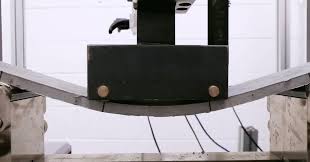
Fig 1: Bendable Concrete
Courtesy: designboom.com
Bendable concrete is an engineered cementitious composite (ECC). Unlike conventional concrete, which is hard and brittle, bendable concrete is soft and flexible. The components that make normal concrete more flexible are modified. Victor Li created bendable concrete at the University of Michigan.
Flexible concrete is held together by fibers. Unlike fiber-reinforced concrete, ECC hybrid strain gets stronger after a crack. Fiber-reinforced concrete starts to crack when the fibers break. It’s tougher for fibered concrete to handle stress. But they do well with bending concrete since it’s hard to break and can absorb a lot of harm.
2. Self-Healing Cement:
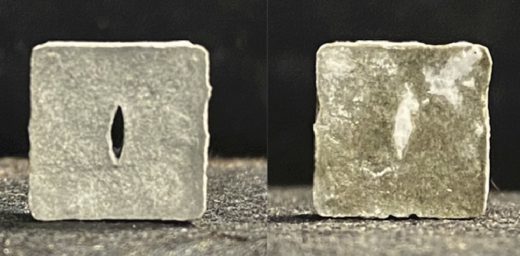
Fig 2: Self-Healing Cement
Courtesy: arcace.ca
It is important to use building materials that are new and different. There has been a lot of research into how to replace concrete, but cement is still changing. A new kind of cement that can fix its cracks is called “self-healing cement.” This cement is made from epoxy-releasing microcapsules. Epoxy resin plugs fractures in the road or sidewalk. It absorbs and emits heat. This material can make structures that control their temperature and save money on repairs.
3. Absorbing Pollution Bricks
The objective of pollution-absorbing bricks is to clean the air. It cleans outdoor air and sends it into buildings, where it is filtered and separated from dust and other pollutants. This brilliant idea emerged from cyclone filtration in a vacuum cleaner. The bricks are formed from hollow concrete blocks. They ensure airflow in the system goes in the appropriate direction. To do this, give them a faceted shape. Shafts make the building stronger. Between the two bricks is a coup a coupler made of recyclable plastic, and at the bottom lies dust.
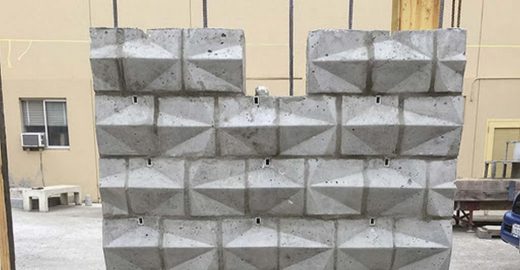
Fig 3: Pollution Absorbing Bricks
Courtesy: re-thinkingthefuture.com
4. Hydro Ceramic:
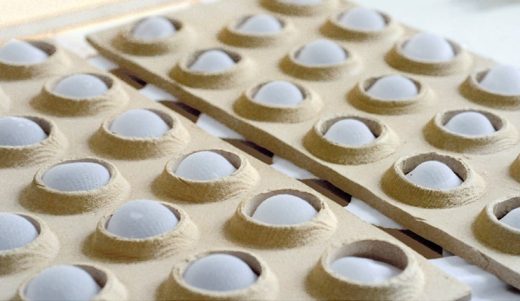
Fig 4: Hydro Ceramic
Courtesy: aac.net
Hydro ceramics are a new kind of wall material that can be used in different climates. These “smart walls” are made of clay panels and water capsules to keep a building cool. A hydro ceramic wall can be a cooling system because it can lower temperatures and increase humidity. When the building’s heating system lets cold air out into the outside air, the water that has been stored can evaporate. When using these walls, you can expect the temperature to drop by 5 degrees Celsius. It also adds 15% more water to the air, making a living in hot, dry places easier. Due to the low cost of clay and hydrogels, these structures are a cheap option.
5. Light-Generating Cement:
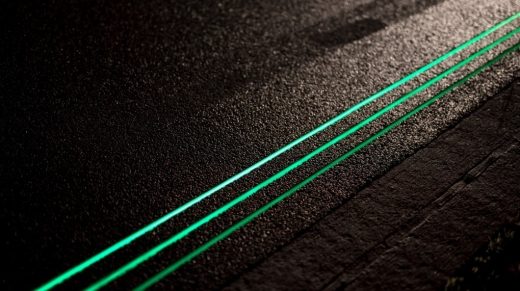
Fig 5: Light-Generating Cement
Courtesy: re-thinkingthefuture.com
This innovative type of cement is see-through during the day and emits dazzling light at night; the glow is created by absorbing sunlight and releasing it when darkness falls. This type of cement is useful for many projects due to its ability to emit light, such as in the construction of road signs, roadways, parking lots, and facades. Cement is primarily made out of the following: sand, river sand, alkali, industrial waste, and water.
6. Pigmented Concrete:
Pigmented concrete can only be mixed with dry powder or wet concrete. These hues are typically made with iron oxide or synthetic dyes. Though most people picture grey, concrete may be colored using pigments to create various colors, such as brown, red, green, and blue, and their variations. Pigmented concretes are durable and won’t lose their color after being exposed to the sun or extreme temperatures for an extended period. Floors, walls, and other structural elements complement concrete decorations.
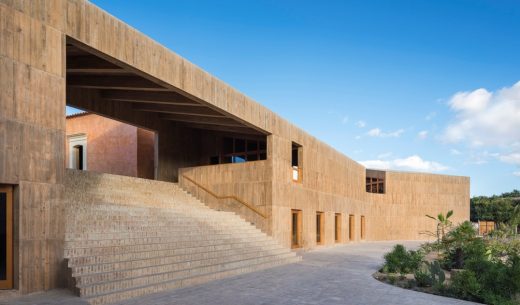
Fig 6: Pigmented Concrete
Courtesy: arch2o.com
7. Sensi Tiles:
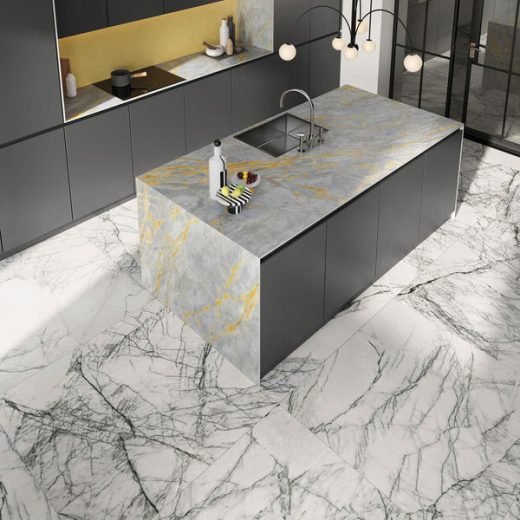
Fig 7: Sensi Tiles
Courtesy: archiexpo.com
Modern construction materials can be physically superior to traditional ones in terms of strength or security. They can also include technologically advanced materials that allow for the realization of the most far-fetched design fantasies. Innovative construction materials include acrylic fiber tiles that detect and react to foot traffic, touches, and lighting. The optical fiber transmits and receives light, allowing the tile’s surface to glow, capture, and disperse various hues. Decorating using this material expands the scope of what can be done in building design and interior decoration.
8. Carbon Fibre:
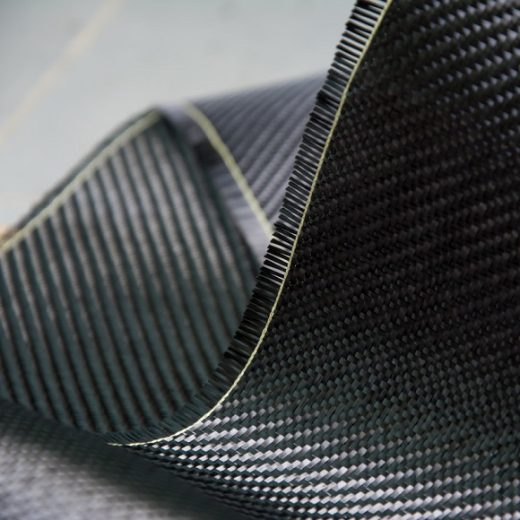
Fig 8: Carbon Fibre
Courtesy: bleckarchitects.com
Carbon fiber has been utilized in sports for years, yet it’s a futuristic material. This new material is employed more in building, which needs strong and light materials. 75% lighter than iron and 30% lighter than aluminum. It strengthens brick and concrete with reinforcing steel and wood. It also thins and lightens panels. Carbon fibers that strengthen concrete also trap heat. The material is pricey; thus, its application is limited.
9. Translucent Concrete:
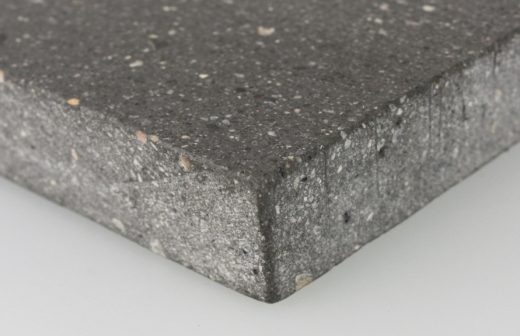
Fig 9: Translucent Concrete
Courtesy: Stylepark.com
The concrete structure’s longevity is better renowned than its lighting system. That is, until translucent concrete, the most revolutionary material for interior design in decades, hit the market. Translucent concrete is produced from an optical glass fiber block that is solid but translucent. LitraCon, often known as “transparent concrete,” can be utilized for interior and outdoor surfaces. Based on studies and tests of transparent concrete, optical fibers contribute to no more than 4% of the entire mixture. In conclusion, research shows that walls built with these concrete blocks can support substantial loads.
10. Richlite:
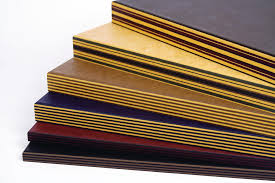
Fig 10: Richlite
Courtesy: architectmagazine.com
Richlite is a durable composite made of paper. Used paper is pressed into uniformly hard and smooth panels. Richlite is less environmentally harmful than many other building materials by employing sustainably generated paper. With technology, it may be made into a fantastic raw material for environmentally responsible construction.
Richlite may be molded, sanded, and joined like real wood, making it more adaptable than stone or other hard surfaces. Richlite is not only fireproof but also hygienic due to its reduced moisture absorption, strong heat resistance, and fire resistance. Since it’s composed of natural materials, it has a nice appearance. It’s utilized to make musical instruments since its acoustic properties are equivalent to ebony but cheaper. Richlite is a popular surface for custom home furnishings, architectural embellishments, and one-of-a-kind construction projects.
11. Allusion Panels:
Stabilized aluminum foam is used to create the cladding material known as “Allusion panels,” which are strong and lightweight panels that have the appearance of metallic sponges. The Allusion panels stand out from the crowd because of their ability to dampen noise, their durability, their resistance to fire, and the ease with which they may be installed. They are used in various panel applications, including interior and exterior walls, ceilings, floors, signage, and even lamps.
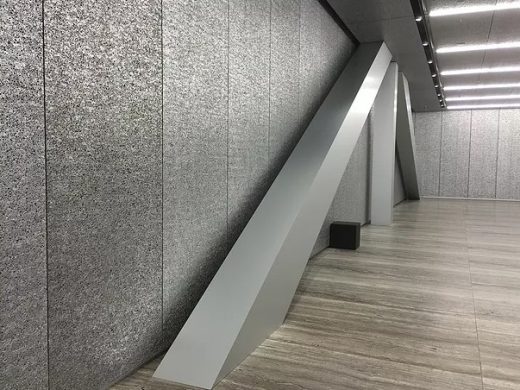
Fig 11: Allusion Panels
Courtesy: architectureanddesign.com.au
12. Aerographite:
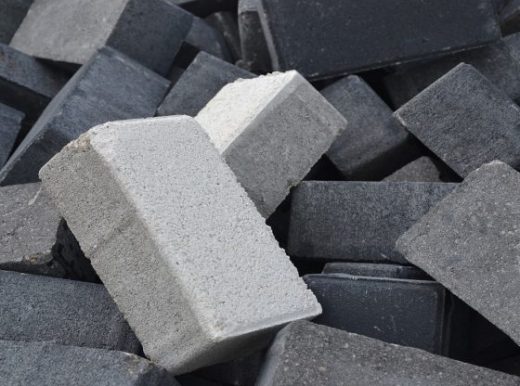
Fig 12: Aerographite
Courtesy: illustratedcuriosity.com
Aerographite is a composite from a network of extremely small hollow carbon tubes, and aerographite is a strong and pliable optical absorption material. Aerographite is stable under extreme temperatures and can withstand substantial vibration without deterioration. More so, it has excellent electrical conductivity. Aerographite can be compressed to 95% of its normal area and return to its original shape. Stress improves the material’s strength. Aerographene is mostly used in the construction industry for making purification systems, airplane materials, and satellites.
13. 3D Graphene:
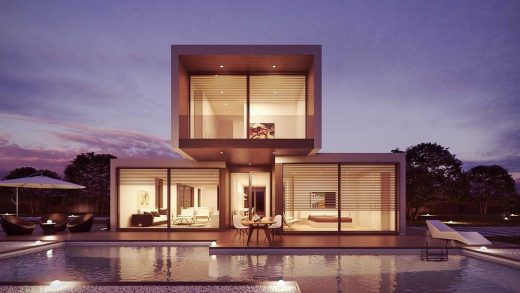
Fig 13: 3D Graphene
Courtesy: grapheneuses.org
Graphene’s unique thermal, electrical, and optical properties make it stand out among other nonmaterial. Only 5% as dense as steel but ten times as strong, 3D graphene has incredible potential. Graphene’s 2D structure has intrigued scientists for some time, but it has yet to prove useful in construction. At the advent of 3D printing, tiny graphene flakes were compressed under high pressure and heat to form structures like cylinders that could sustain substantial loads. Buildings up to 98,000 feet in height might be supported by graphene in principle.
14. Transparent Wood:

Fig 14: Transparent Wood
Courtesy: euronews.com
Transparent wood in construction is revolutionary since it may be used in place of glass and plastic. It’s just as strong as wood but takes up much less room in storage. Compressed and treated wood veneer. The use of polymers and the removal of lignin results in a see-through surface. In addition to its excellent transparency and low thermal conductivity, transparent wood has a low density compared to glass. Because of the material’s high optical transmittance, less artificial lighting may be needed, reducing energy use.
15. Nanoparticles:
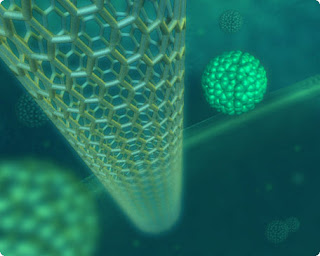
Fig 15: Nanoparticles
Courtesy: usharama.edu.in
Nanotechnology in construction makes strong structural materials from nanoparticles. Durable and tiny nanoparticles save materials. They boost construction efficiency and safety. Nano-titanium, carbon nanotubes, and graphene oxide are tangible nanoparticles.
These materials increase concrete’s flexural, tensile, and compressive strengths. These features improve a building’s efficiency and durability. Carbon nanotubes in concrete can clean themselves, making assessing a structure’s condition easier.
16. Wool Bricks:
Wool is mixed with the clay used to make regular bricks to make wool bricks. Wool bricks are a major contributor to the pursuit of carbon-neutral construction methods because they produce no greenhouse gases during manufacturing. Because of the high carbon concentration of the combustion byproducts, brick kilns release toxic fumes during the manufacturing process. Making bricks with the traditional technique has terrible impacts on the environment.
On the other hand, Wool bricks are resilient and sustainable because they are constructed from wool, clay, and natural polymers. In addition to being far sturdier than regular bricks, they have their distinct aesthetic.
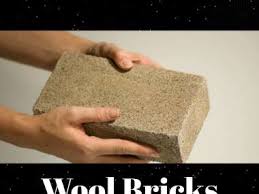
Fig 16: Woo Bricks
Courtesy: prezi.com
17. Liquid Granite:
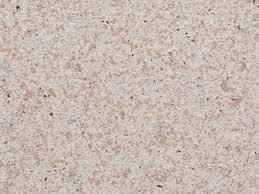
Fig 17: Liquid Granite
Courtesy: crystonepaint.com
Compared to the cement required to make precast concrete, only a third of the amount is needed to make liquid granite. As a result, liquid granite is not only fireproof but can also significantly lessen the effects of human activity on the environment. The form will not change even when heated to 1,100 degrees Celsius. Unlike concrete, it doesn’t detonate when heated to extremes.
18. Microbial Cellulose:
Microbial cellulose is a sustainable substance made from yeast, microorganisms, and bacteria, and microbial cellulose synthesis uses bacterial cellulose. It creates a structural membrane for signs and outside walls. Microbial cellulose decomposes naturally and doesn’t harm landfills. Low cost and easy manufacture support industrialization and green building.
19. Biochar:
Biochar is made by heating organic materials without oxygen. Before biochar is packaged, chemicals are added to boost its water absorption and moisture-storage abilities. Biochar is a greener building material than concrete or plastic. All organic landfill material converted to biochar would reduce global methane emissions by 11%. Biochar can minimize cement use and CO2 emissions when making bricks. Charcoal-and-polymer bricks reduce plastic waste.
20. Low-E Glass / Films:
Low-E glass is a type of window glass that has been coated with an invisible metallic oxide or metal, resulting in a surface that reflects heat but lets light through. This glass has been shown to lessen the wear and tear on your HVAC system, protect your window coverings from fading, and make your house more pleasant.
Conclusion:
The new building materials change the way buildings are put together. New building materials also meet sustainable standards and specifications. The future of the building is changing, from materials that make their energy to those that protect structures better. Many new ideas have yet to be used in full-size buildings, but they could be used in your projects in the next ten or twenty years. Until then, staying on top of trends will help you make more money and do your part to keep the environment clean.
References:
1. BuilderSpace. “7 New Innovative Building Materials – BuilderSpace.” BuilderSpace, 4 May 2018, www.builderspace.com/7-new-innovative-building-materials.
2. “Stack Path.” Stack Path, www.forconstructionpros.com/business/article/21036632/18-new-building-materials-that-could-revolutionize-construction. Accessed 10 Nov. 2022.
3. Romanova, Olga. “Ultra-modern Building Materials: The Most Innovative – 17 Innovative Construction Materials Changing How We Build.” Plan Radar, 11 July 2022, www.planradar.com/gb/top-15-innovative-construction-materials.
4. MarcusCannon. “7 Innovative Building Materials That Are Set to Change the Industry | Interfocus.” InterFocus Lab Furniture, 17 Sept. 2018, www.mynewlab.com/blog/materials-future-building-industry.
5. “20 Innovative Construction Materials | ProEst.” ProEst, 23 Mar. 2022, proest.com/construction/tips/innovative-materials.
6. BigRentz. “18 Future Building Materials That Will Change Construction.” 18 Future Building Materials That Will Change Construction, 4 Dec. 2018, www.bigrentz.com/blog/the-future-of-building-materials.
If you have a query, you can ask a question here.


